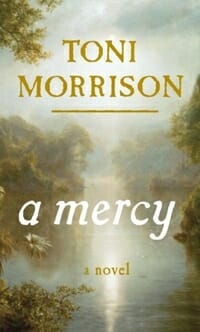Toni Morrison

Nobel Prize-winning author explores colonial history
It’s difficult not to read Toni Morrison’s latest novel outside the shadow of Beloved, that other novel about an enslaved girl whose mother makes a heartbreaking choice.
A Mercy is Morrison’s fourth novel since Beloved, which ostensibly won the Ohio-born author the Nobel Prize and was declared “the single best work of American fiction published in the last 25 years” by The New York Times. It’s no wonder Beloved‘s towering reputation colors everything Morrison has written since.
Morrison hasn’t become one of America’s greatest writers by giving readers what they want; her business is giving them something they didn’t know they needed. In this case, that something is a meditation on America before it dreamed of nationhood, told through the stories of early traders, farmers and slaves, of all races. The publicists at Knopf describe A Mercy as “almost like a prelude” to Beloved. It’s important to note from the outset that A Mercy—set in the 17th century (versus Beloved‘s late 1800s)—is totally different, and that this is good and right.
The center of A Mercy is the first-person narrative of Florens, a 16-year-old slave girl smarting from an early betrayal by her mother. Florens now stalks a callous, charming, free black ironworker in an effort to fill the gap in her heart. Her tale interweaves chapters that recount other characters’ stories: Jacob Vaark, Florens’ Anglo-Dutch owner; Lina, an enslaved Native American woman; a wild child of indeterminate origins called Sorrow; Jacob Vaark’s hardy, but mournfully childless wife, Rebekka, and two indentured servants.
-

-

-

-

-

-

-

-

-

-

-

-

-

-

-

-

-

-

-

-

-

-

-

-

-

-

-

-

-

-

-

-

-

-

-

-

-

-

-

-








































